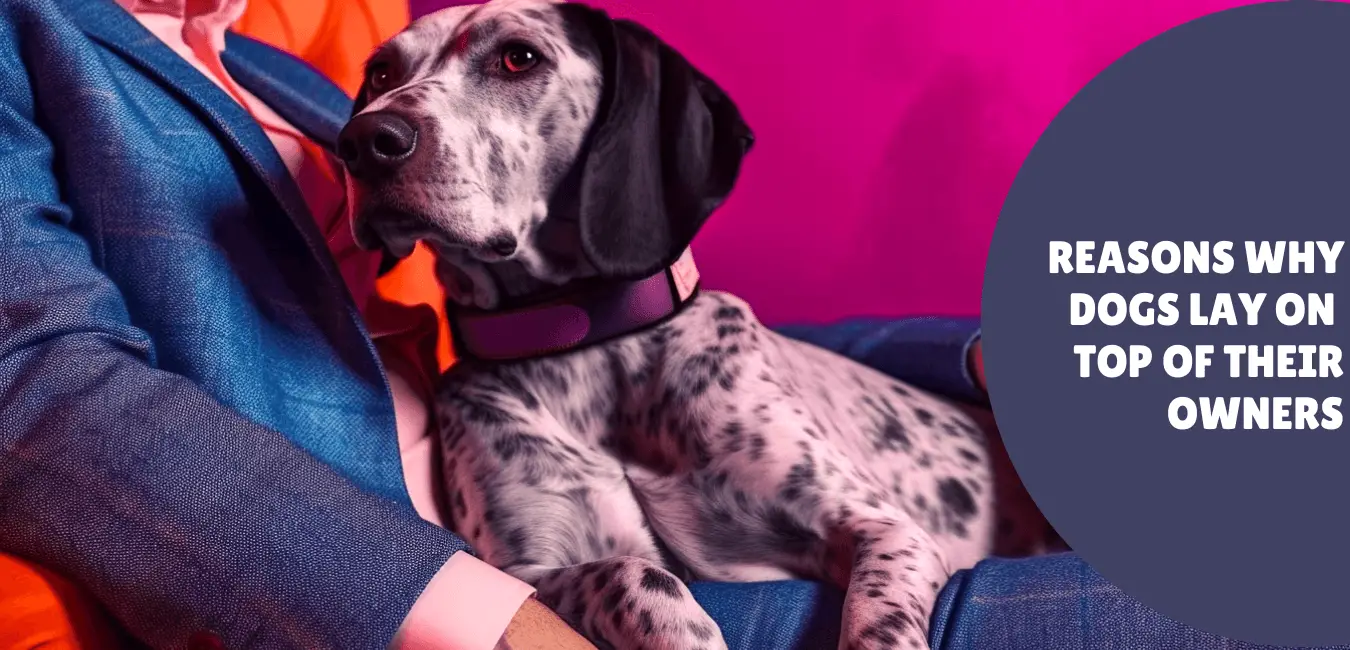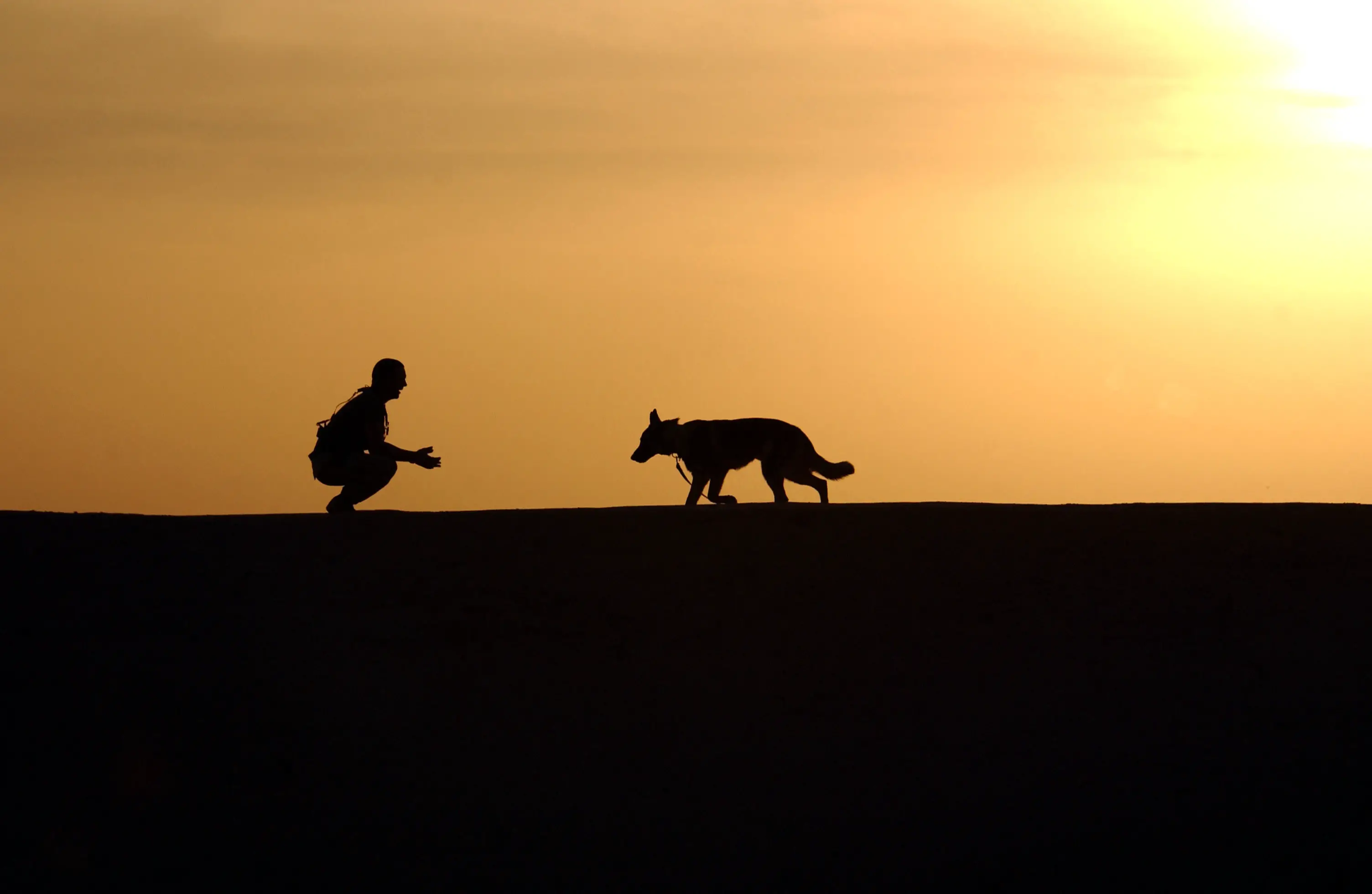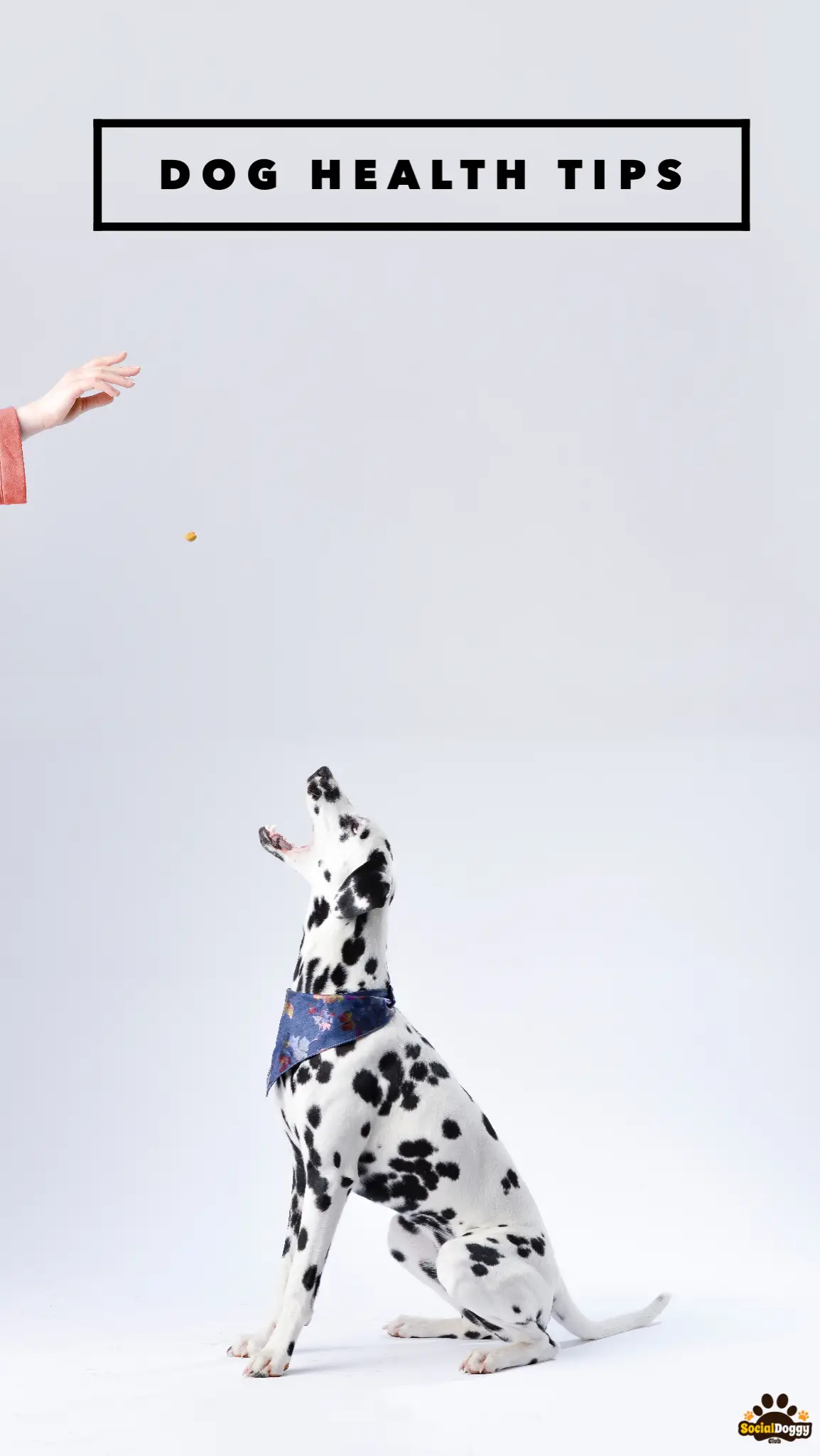Have you ever wondered why your furry friend loves to snuggle up on top of you? It’s not just because they want to be close to you. There are actually several reasons why dogs lay on top of their owners.
Dogs have been man’s best friend for centuries, and their behavior never ceases to amaze us. One of the most common behaviors that dogs exhibit is laying on top of their owners. Some owners find it cute, while others find it annoying. But have you ever stopped to think about why they do it?
There are several reasons why dogs lay on top of their owners, and it’s not just because they want to be comfortable. From seeking warmth to showing affection, dogs have their own unique reasons for wanting to be close to their owners. In this article, we will explore these reasons in detail, so you can better understand your furry friend’s behavior.
Contents
Need for comfort and security
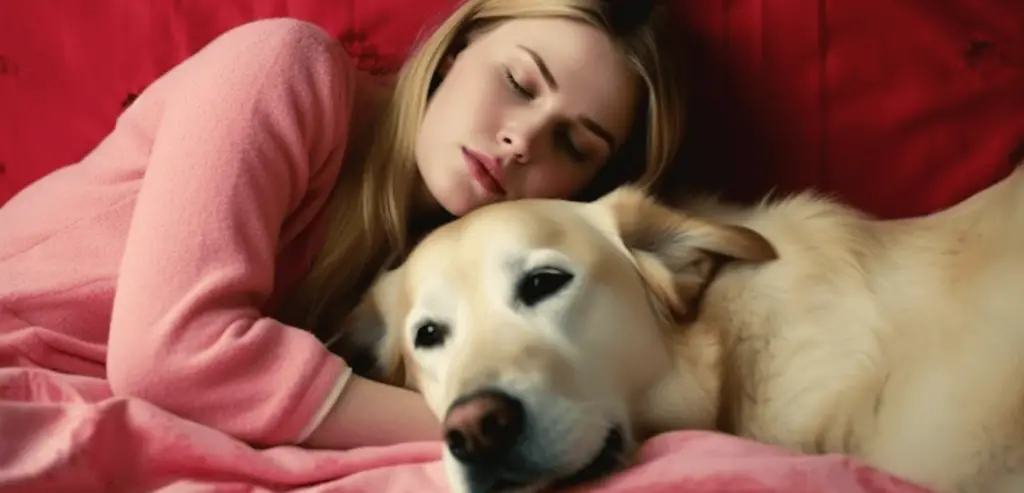
Dogs have a biological need to feel safe and secure. So, they seek comfort from their owners, by laying on top of them. This brings a sense of protection and warmth. It also strengthens the bond between dog and owner.
In addition, dogs may lay on owners for physical comfort. It relieves joint pain and anxiety.
Some dogs may see themselves as protectors and laying on their owners gives them a sense of control.
Pro Tip: Though it’s natural for dogs to seek comfort, boundaries should be established if the behavior becomes overwhelming or unwanted. Training can help reinforce appropriate behaviors.
Bottom line: Dogs want us for our body heat.
Seeking warmth
Dogs love to snuggle and lay on their owners, as a way to stay warm. This comes from their ancestral wolves, who would sleep together in packs to conserve heat. This is an instinctual behavior, especially in cold weather.
Besides keeping warm, dogs also show their affection by seeking physical contact. Laying on their owners is a sign of comfort and safety. It makes both the dog and the owner feel good.
Plus, the pressure of a dog’s body has therapeutic benefits for humans. Studies say that animals can help lower blood pressure and reduce anxiety.
Dr. Daniel Joffe from Animal Hospitals of Manitoba said: “Petting an animal leads to a decrease in blood pressure and helps calm the individual.”
It’s a way of saying ‘I love you’, and dogs won’t move until you understand.
Showing affection
Dogs express physical closeness and emotional bonds by laying on top of their owners. They want comfort, warmth, and protection from being close to their owners. This behavior is similar to when puppies cuddle with their mom and siblings.
Additionally, dogs may lay on their owners to show dominance or ownership. But, this is more common with untrained and unsocialized dogs. It can lead to aggression and territorial issues.
Pro Tip: Reward good behavior, like sitting beside you, instead of laying on top. Set boundaries and give comfortable alternatives. Training sessions help reinforce good behaviors while avoiding bad ones.
Dogs don’t have a lot, but they do have a way of claiming their spot – your lap!
Marking their territory
Dogs have an instinct to mark their territory. Lying on their owners is a way of asserting dominance and creating a sense of security. It also allows them to be noticed and gain attention from their owners.
They crave closeness with their owners, so they sit or lay on them to get physical contact and reassurance. This also serves as comfort and affection between the pup and its owner.
Furthermore, dogs use scent to communicate. When they lay on their humans, they leave a scent behind that reinforces the bond. This also tells other pets or family members that the person belongs to the dog.
Getting closer to furry friends might mean sitting or laying down next to them. Not everyone enjoys this connection, but for most dog lovers, seeing our pets happy is everything. Dogs communicate through body language, cuddles, and the occasional butt sniff – a language only dog lovers understand.
Communication with their owner
Dogs use non-verbal communication to express themselves. One way is by laying on their owners. This means they want closeness and attention. This interaction between a dog and their owner plays an important part in maintaining a healthy relationship.
This gesture shows the dog’s need for affection, safety, and comfort. It also shows the dog trusts its owner. Plus, when they lay on top of their owner, oxytocin is released. This hormone makes the dog and owner both feel relaxed and happy.
Interestingly, this behavior may come from wolves. Wolves would sleep in piles to stay warm. Herding dogs may be more inclined to do this than other breeds.
Pro Tip: If an owner does not want their dog laying on them, they should ignore undesired behaviors like nudging or whining. Beware – the dog may try to cuddle-coerce the owner into submission!
Types of dogs that are known to frequently lay on top of their owners
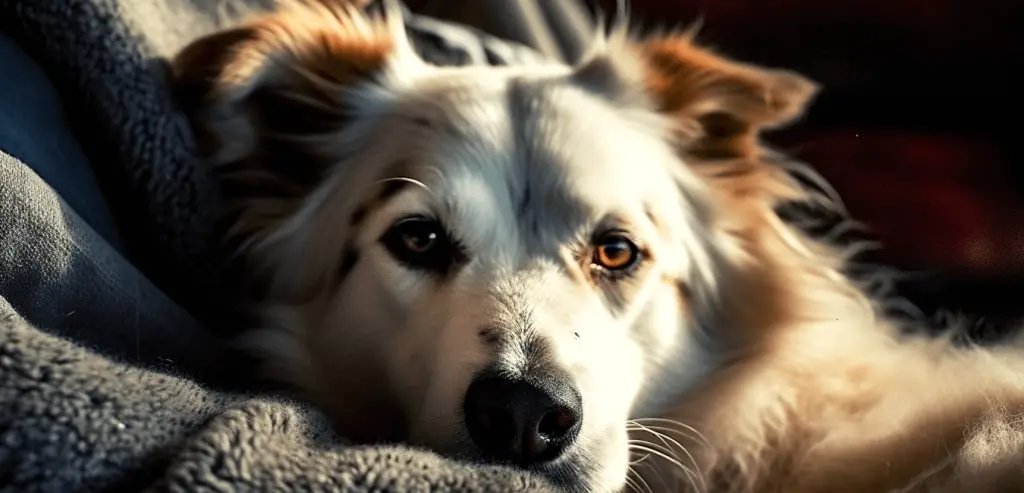
To understand which types of dogs are more likely to lay on top of you, let’s take a closer look at the canine breeds known for this behavior. In order to identify whether your furry friend belongs to one of these categories, it may be helpful to consider lap dogs, velcro dogs, cuddlers, anxious dogs, and attention seekers.
Lap dogs
Small furry friends who love snuggling up with their owners are known as ‘lapdogs.’ They cherish being close to their humans and cuddling is their way of expressing affection.
- Chihuahuas: These sweet, tiny pups are among the most popular lapdog breeds. High energy and loyal, they are happiest when given plenty of human attention.
- Pomeranians: Fluffy and sweet, these cuties adore being held and love getting pampered and cuddled.
- Pekingese: Majestic Pekingese love being the center of attention. They are quite charming and relish being treated like royalty.
- Bichon Frise: Friendly and cheerful, Bichon Frise make perfect lapdogs due to their sunny disposition.
- Cavalier King Charles Spaniel: Gentle and loving, Cavaliers enjoy closeness and require lots of human interaction.
- Japanese Chin: These tiny furballs have been lapdogs for over 2000 years! They make sweet companions and enjoy spending time with humans.
Lapdogs fill our lives with joy and happiness. They’re more than just cuddly pets!
Pro Tip: Exercise is a must for lap dogs. Even though they love lounging, they still need physical activity to stay healthy. Velcro dogs are like living backpacks – always by your side – but they require more care than textbooks!
Velcro dogs
These dogs have a special habit of sticking close to their owners, always near. Known as “velcro dogs“, they’re known for their loving and loyal nature when it comes to their human family members. This attachment has come from their breeding and long history with humans.
The benefit of having a velcro dog? Research shows that having one can lower your blood pressure, reduce stress, and increase your oxytocin levels.
The story of Hachiko is one of the most popular tales of velcro dogs. He waited for his owner at the train station every day, even after his death. He kept waiting for nine years until he sadly passed away. Today, people remember him with books, movies, and art.
So if you’re looking for some serious cuddling, get yourself a velcro dog!
Canines That Crave Cuddling
Dogs are renowned for their loyalty and love. Yet, certain breeds take it to the next level when it comes to showing affection. These pooches are fondly called ‘Cuddlers’ as they prefer sitting or lying on top of their owners. Let’s take a peek into the attributes of such dogs.
- Labrador Retriever: Known for their playful and social nature, these “Labs” also love curling up with their owners on the sofa.
- Golden Retriever: Known for their happy-go-lucky attitude, these Goldies are highly loving and often climb onto laps without asking.
- Poodle: These glam pups are popular in show rings but can also be very snuggly with their people.
If you’re searching for an affectionate companion, these breeds might be the perfect fit. Nevertheless, each pup has its own personality, no matter the breed. Factors like upbringing can play a role in whether your canine becomes a cuddle buddy. However, studies suggest that the aforementioned breeds are more inclined to jump on your lap than others.
Pro Tip: Dogs adore attention. Make sure to dedicate time every day to shower them with love – they’ll be your shadow in no time!
Anxious dogs
Attention-seeking dogs are like exes who still text you at 3 a.m. – persistent, needy, and impossible to ignore. They may tremble, whine or even huddle onto their owners to seek comfort and stability. This could be due to emotional uncertainty or underlying medical conditions such as separation anxiety, noise phobia, or age-related cognitive decline.
It’s important to consult a vet to rule out any serious medical conditions and work on behavior modification techniques. These dogs may have difficulty calming down when away from their owners for an extended period. Dachshunds, Pugs, Chihuahuas, and Beagles are known for this behavior.
Pomeranians can display increased anxiety levels when left alone for longer. This may lead to destructive chewing behaviors that can be harmful for the dog and nearby objects. In severe cases, medications may be prescribed by veterinarians alongside behavioral therapy techniques.
French Bulldogs may snore while sleeping with their human companions occasionally – but excessive sleeping with humans for prolonged periods could lead to bacterial infections and back pains. To avoid this, take protective measures like sofa covers during your dog’s naptime.
Attention seekers
Dogs may show affection by lying on top of their owners and craving attention. Such dogs seek physical contact to interact and be social. Breeds like the Shih Tzu, Golden Retriever and Labrador Retriever, have been bred for human companionship and often exhibit this behavior.
When they lean or lie on their owners’ lap it could be a sign of eagerness to bond. Different breeds express this differently. For example, Chihuahuas may jump and lick their owners’ faces.
Dogs may also lay on their owners for a sense of security. Training with positive reinforcement helps discourage mindless demand for attention and obedience challenges.
The best approach is to reward good behaviour with treats or verbal praises. This way, your pet will learn new ways of expressing themselves without needing physical contact all the time. Professional trainers can help develop obedience skills and behavior mod strategies, enhancing your bond with your furry friend. Just remind them that personal space is important – unless they want to start paying rent!
How to encourage or discourage your dog from laying on top of you
To encourage or discourage your dog from laying on top of you in order to create boundaries, providing comfortable alternatives and consistent reinforcement strategies can be productive solutions. Redirecting your dog’s behavior, instead of punishing them, can be helpful in forming positive associations and effectively managing their behavior.
Providing comfortable alternatives
One way to keep your pup off of you is to provide alternative comfortable options. Ideas include:
- A cozy bed in a quiet room
- Plush blankets and cushions for lounging
- A crate or pen with comfy bedding
- Encouraging play with their favorite toys
- Installing a dog ramp or stairs
These spots should be different throughout the home to provide variety. Dogs like space with little noise or activity- basements and guest rooms work well. Through time and positive reinforcement, they’ll learn it’s better to have their own spot. Every pup is unique- some take longer than others to adjust. Approach independence with patience, love, and understanding- eventually they’ll get it! Let’s avoid chiropractor appointments- don’t let your pup jump on you as if you’re a trampoline!
Setting boundaries and enforcing them
Establishing and maintaining limits is key when teaching your pup not to lay on top of you. Consistency and patience are needed to set boundaries. Knowing your dog’s behavior is important to discipline them correctly. Different approaches may be needed based on their personality.
When setting limits, make sure your pup understands the rules. Reward good behavior with a treat. Punish disobedience by taking away the reward or showing signs of disappointment.
Be aware not to reward bad behavior as it may increase instead of decrease it. Set a clear limit and create a learning environment. Also, use consistent communication when teaching new commands, so your pet will understand what is expected of them.
Having an overly affectionate dog can be tiring. But, with determination, perseverance, and following the tips mentioned, you’ll have a loyal companion without feeling crowded soon! Treat them with a reward to speed up the learning process – unless they’re secretly part of PETA.
Consistent positive reinforcement
Positive reinforcement is essential for teaching your pup how to behave. Reward desired actions, like sitting next to you, and withhold attention if they try to lay on top. It’s important to be consistent with reinforcement, as accidentally rewarding bad behavior can slow progress.
Every dog is different; some may prefer treats, while others may respond more to verbal praise or playtime. Establish clear rules and expectations early to prevent confusion. Consistency is the key to success! If your pup insists on being a human blanket, redirect them to becoming a professional masseuse instead.
Redirecting behavior
To get your furry friend to act the way you want, effective methods are necessary. A way to do this is to discourage them from laying on top of you. Setting boundaries and giving them a comfy spot to rest will likely make them stay there instead.
Positive reinforcement is important when you are redirecting their behavior. Give them treats or praise when they do what you want and this will help them repeat it.
You should also try to understand why they are acting that way. It could be due to separation anxiety or they just want some attention.
Training dogs has been around for centuries. Ancient Greeks used it for hunting and herding. Nowadays, modern techniques help pet owners guide their pets towards better behavior.
Avoiding punishment
Encouraging Positive Habits Rather Than Punishing Your Dog For Laying on You
Train your pup with simple commands like ‘sit’ and ‘stay’. Give them a spot next to you for comfort. Treat and praise them when they follow your commands. Over time, reduce the treats but continue praising good behavior.
Be aware of your dog’s body language. If they’re about to lay on you, guide them away to their spot and use a command like ‘no’. This will soon become second nature to them.
Use positive reinforcement to guide them in the right direction. It takes time and patience but it’ll make the process enjoyable for both of you. Teaching them specific behaviors helps redirect negative ones into preferable actions.
Your pup may not talk but they can make their desires known – whether it’s a tummy rub or a need for some space.
Importance of recognizing your dog’s behavior and needs
To better understand your furry friend’s behavior and needs in why does my dog lay on top of me, delve into the sub-sections of this section: understanding your dog’s body language, recognizing signs of anxiety or discomfort, creating a strong bond with your dog, and improving the quality of life for your dog. By exploring each of these areas, you’ll be able to provide your pet with the care and attention they deserve.
Understanding your dog’s body language
Interpreting your dog’s body language is important in recognizing their physical and emotional needs. For example, a tail wag doesn’t always mean they are content. Similarly, snarls and growls may indicate discomfort or fear rather than aggression. Dr. Robert Sailhalter, American Kennel Club Behavioral Economist, states that there are thousands of two-way communications between dog owner and dog. This can help improve the owner’s physical and mental well-being by increasing responsibility and sympathy.
Investing in understanding your canine companion’s body language and communication can further strengthen the bond between them. Even dogs have bad days, so keep an eye out for signs of stress and anxiety.
Recognizing signs of anxiety or discomfort
Identifying signs of unease in dogs is vital for responsible pet ownership. Signs include:
- Excessive panting, drooling, shaking, or dilated pupils.
- Hiding or becoming withdrawn.
- Destructive behaviors like chewing, digging, or knocking over objects.
- Barking and growling at strangers or other animals.
It’s our responsibility to ensure our pet’s safety and well-being. To do this, create a calm environment with familiar items like blankets or toys, and consider behavioral training. Paying close attention to signs of discomfort and addressing them with appropriate measures like calming exercises and professional advice can strengthen the bond between pet and owner. A strong bond requires time, effort, and maybe a bit of poop-picking!
Creating a strong bond with your dog
Building a strong connection with your pooch is key in having a happy life together. To make this bond, responding to and understanding their behaviour and needs is top priority. Acknowledge their individual expressions of love, loyalty, fear, or happiness. This’ll help deepen your relationship.
Exercise and activities that get you interacting are great for strengthening your bond. Go on walks or play fetch to build trust. Training can help communication and mutual respect too. Cuddling or grooming is also a great way to make moments of intimacy without words.
To make sure your pup feels understood, pay attention to their non-verbal cues. These will differ from breed to breed but could include wagging tail, raised ears, or pacing. Responding to these signals will make your communication better and make your time together more enjoyable.
Dogs are great at showing gratitude to their human partners, like protecting their families. A well-nurtured bond will make both pet-parent and family members enjoy a lifetime of companionship. Helping your doggo live their best life is as rewarding as watching them dig up your neighbor’s garden!
Improving the quality of life for your dog
Our furry friends need us to understand them for a better life. Comprehending their behavior and traits is vital. To make them healthy and happy, we must adjust their lives and promote their emotional and physical wellbeing.
To better your dog’s life, have a routine. Make sure they get enough rest, exercise, mental stimulation and nutrition. Socializing them is also important so they know how to behave with strangers and other pets.
Good hygiene, like regular baths and brushing their teeth, will help them stay away from illnesses. Be aware of early signs of distress or conditions and find help when needed.
These strategies tailored for your dog can improve their mood, energy and health.
My golden retriever Bentley had anxiety when left alone. After consulting a vet, I used training techniques for those with anxiety disorders. It worked – Bentley is calmer when we’re away.
We may not speak the same language, but through understanding and respect, we can form an irreplaceable bond with our canine companions.
Conclusion: Nurturing the bond between a dog and its owner through mutual understanding and respect.
Building a strong bond between a dog and its owner is key. Dogs lay on top of owners for warmth or affection. Responding well to this shows respect. This helps the pet feel secure and leads to a healthier relationship.
For a strong bond, exercise, nutrition, and interaction are important. This keeps pets relaxed, even when alone. It also prevents behavioral issues.
Owners can deepen the connection with training. This helps with obedience and creates fun activities. Plus, it gives emotional support to both pet and owner. It reduces stress, anxiety, and depression.
According to an ASPCA survey in 2020, the love between Americans and their pets has grown during COVID-19.
Frequently Asked Questions
Q: Why does my dog lay on top of me?
A: Your dog may lay on top of you for various reasons like showing affection, seeking comfort or security, marking territory, or trying to keep warm.
Q: Is it normal for my dog to lay on top of me?
A: Yes, it is a common behavior seen in dogs, and it is considered normal as it is a way of bonding with their owners.
Q: What should I do if I don’t want my dog to lay on top of me?
A: You can redirect your dog’s behavior by providing them with a comfortable bed or a specific space to lay down. You can also use positive reinforcement techniques and reward your dog when they use their own bed or space.
Q: Can my dog’s laying behavior be a sign of separation anxiety?
A: Yes, it could be a sign of separation anxiety, especially if your dog lays on top of you when you are about to leave or after you come back from somewhere. It is essential to seek professional help if you suspect your dog has separation anxiety as it can be debilitating for them.
Q: Why does my dog lay on top of me only at certain times?
A: Your dog may lay on top of you only at certain times because they associate that behavior with specific activities like watching TV or relaxing. It could also be a sign of stress or anxiety, depending on the situation.

